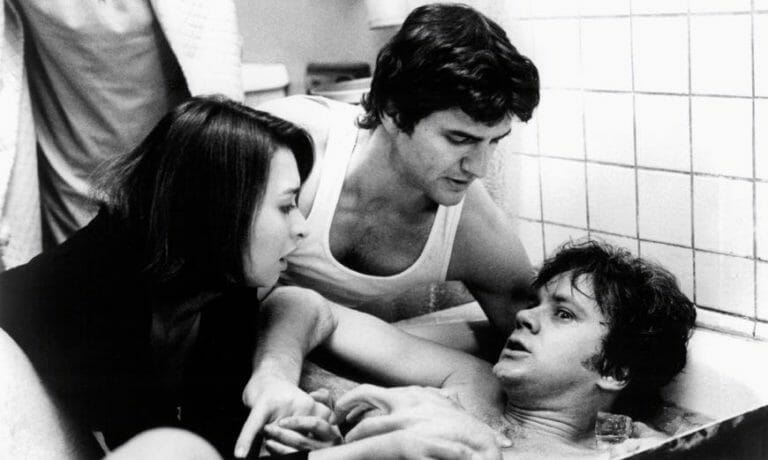By Eric Owusu · March 22, 2015

Brooding. Shadowy. Nightmarish. In dark, psychologically thrilling screenplays, these adjectives describe the themes and elements that make the screenplays what they are. They often feature protagonists battling their perceptions of what they think is real and what isn’t.
In order to create a screenplay where minds are bent and reality is fleeting, a writer has to paint a dark picture to capture the sense of darkness that holds the protagonist captive and holds the attention of the audience.
When penning your own dark setting in your screenplay, keep these tips in mind:
Create A Dark Setting
Jacob’s Ladder features a mostly grim New York City in the 1980s where Vietnam veteran Jacob Singer has hallucinations and horrifying dreams, often unable to discern them from what’s actually going on around him. The New York City he exists in throughout the movie is dark. He’s often in it at night. The first time we see him in NYC, he’s trapped underground, alone, in a dingy subway car at night. Another time, he’s at a chaotic party where he thinks he sees a monster assault his girlfriend.
In Fight Club, many of the settings are dark. The seemingly vacant house the protagonist and his girlfriend live in, the dark bar basement the men fight in, the dark office building that the narrator finds his Project Mayhem men in. These dark settings illustrate the shady, sordid world surrounding these characters. A solid way to establish dark settings in your screenplay is to use words that punch in the action lines. “Brooding, shadowy, nightmarish” are a few to get you started.
Establish The Protagonist As A Dark Character
In the screenplay for Donnie Darko, Donnie is introduced as a sleepwalker who is rude to his mother and mysterious about his actions and motivations to the rest of the people around him. There are several scenes where he wakes up in the middle of dark nights and talks to “Frank,” a terrifying figure in a grotesque bunny costume. Donnie does the mischievous things Frank tells him to do at night and isn’t remorseful about doing them until late in the screenplay.
In your world of darkness, be sure to have a dark protagonist at the helm of the endeavor. They are the person of interest we follow throughout the screenplay, so they and their internal and external struggles have to match the nature of the screenplay for optimum cohesion.
Have The Other Characters Fail to See What The Protagonist Sees
In Fight Club, the narrator wrestles with his sanity and his identity when he forms a relationship with a soap salesman named Tyler. The narrator’s love interest doesn’t know how to deal with him, not knowing when his mood will change and what it will be, and neither does the narrator. Jacob in Jacob’s Ladder sees things, has flashbacks, and hysterical fits, all of which his girlfriend doesn’t understand and cannot grasp. Donnie’s mother, sister and teachers don’t understand why he says the things he does.
When creating the characters that surround your troubled protagonist, make their personalities different from each other’s and also make them “normal,” to juxtapose your dark protagonist. Don’t make all of them anywhere close to as disturbed as your brooding protagonist is. You want your dark protagonist to shine as the beacon of strangeness in your screenplay and a somewhat mellow supporting cast of characters will help fully display that protagonist.
Show The Problems The Protagonist Faces
Be sure to show what challenges the protagonist faces in your screenplay. Write scenes where your Donnie doesn’t know what’s real and what’s not. Create scenarios where your Jacob doesn’t know if they’re dreaming or not. Put your narrator in situations where they don’t know if they are being themselves or a totally different person. The more compelling situations you put your protagonist in, the more interesting they and their reactions become. And have the things your protagonist chooses to do be as dark, if not darker, than the situations they’re trying to navigate.